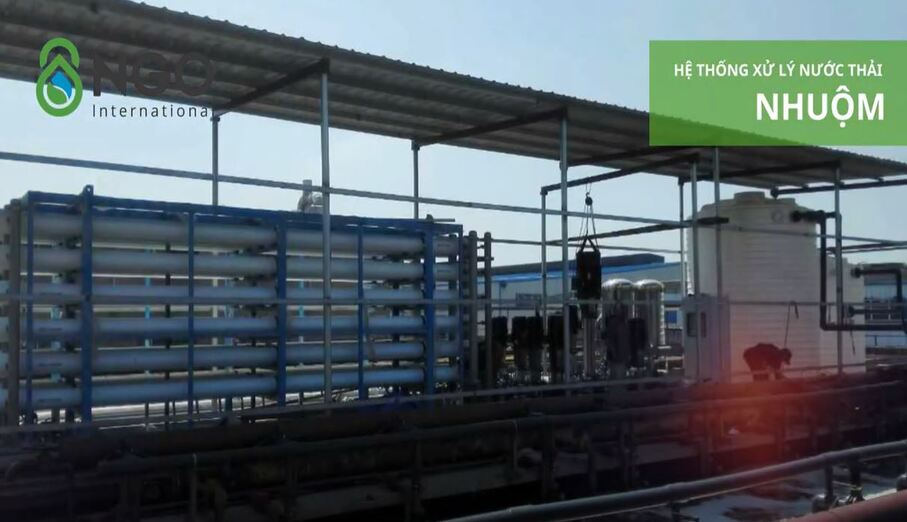
The textile dyeing industry is one of the sectors that consumes a massive amount of water and generates large volumes of wastewater containing numerous hazardous chemicals. If not properly treated, textile dyeing wastewater can cause severe impacts on the environment and human health.
1. Hazardous Components in Textile Dyeing Wastewater
Wastewater from the textile dyeing process contains various harmful substances, including:
- Synthetic dyes: Dyes in wastewater are often highly durable, difficult to degrade, and capable of causing severe pollution to water sources.
- Chemical substances: These include detergents, softeners, waterproofing agents, and antioxidants. These substances can persist in the environment for a long time, leading to significant chemical pollution.
- Organic substances and bacteria: Improper treatment and discharge can result in an increase in bacterial load and decomposing organic matter, reducing water quality and negatively affecting ecosystems.
2. Environmental Impacts of Textile Dyeing Wastewater
If not properly treated, textile dyeing wastewater can cause numerous adverse effects on the environment, specifically:
- Water pollution: The dyes and chemicals in wastewater can alter the color, taste, and turbidity of water, affecting aquatic organisms and humans.
- Degradation of groundwater quality: Chemicals can seep into the soil, contaminating groundwater – a primary source of drinking water for many regions.
- Harm to aquatic ecosystems: Textile dyeing wastewater contains large amounts of toxic substances that can kill microorganisms and damage aquatic ecosystems. Certain aquatic species may face extinction as they cannot survive in polluted environments.
3. Impacts on Human Health
In addition to environmental effects, textile dyeing wastewater also poses significant threats to human health:
- Risk of skin diseases: Direct contact with textile dyeing wastewater can cause skin irritation, dermatitis, and chemical allergy-related issues.
- Respiratory system impacts: Inhaling air polluted by chemical vapors from wastewater can lead to respiratory diseases such as asthma and pneumonia.
- Accumulation of toxic substances in the body: Chemicals in textile dyeing wastewater can enter the food chain through aquatic species and gradually accumulate in the human body, causing severe health problems such as poisoning, cancer, and endocrine disorders.
4. Responsibilities of Enterprises in Wastewater Treatment
Textile dyeing enterprises that fail to treat wastewater properly not only harm the environment but also violate environmental protection regulations. To mitigate the harmful effects of textile dyeing wastewater, businesses should:
- Invest in modern wastewater treatment systems: Utilize advanced technologies such as coagulation-flocculation, oxidation, and biological methods to remove hazardous substances in wastewater.
- Strictly comply with environmental protection laws: Ensure that the quality of treated wastewater meets national safety standards.
If you are interested in effective textile dyeing wastewater treatment solutions, refer to the article: Textile Dyeing Wastewater Treatment Solutions
5. Benefits of Effective Textile Dyeing Wastewater Treatment
Proper treatment of textile dyeing wastewater not only minimizes environmental and health impacts but also provides numerous benefits for businesses, such as:
- Protecting reputation and brand: Businesses that fulfill their social responsibilities are highly regarded by customers and communities.
- Minimizing legal risks: Compliance with legal regulations helps avoid significant fines and legal issues related to environmental pollution.
Conclusion
The harmful impacts of textile dyeing wastewater on the environment and human health are extremely serious if not properly treated. Therefore, investing in advanced textile dyeing wastewater treatment solutions is essential for businesses to protect the environment and ensure sustainable long-term development.

 Tiếng Việt
Tiếng Việt






